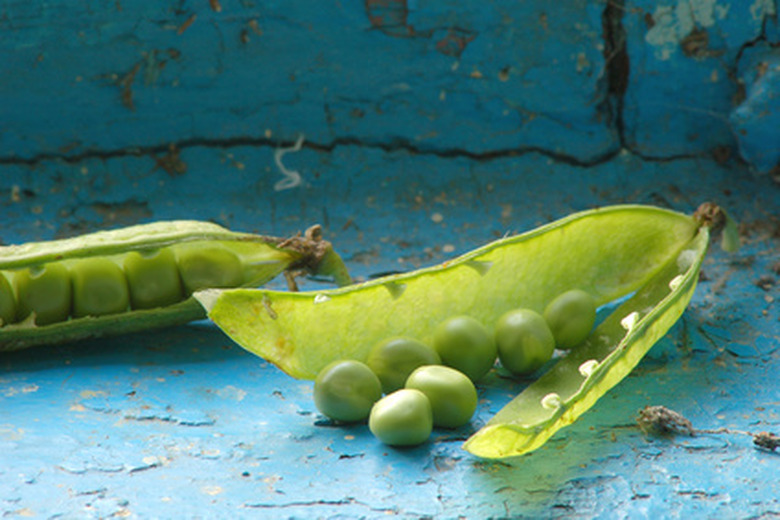History Of The Pea Plant
Don't let the pea's humble size fool you. The pea plant, along with producing flavorful and nutritious fruit, has played significant roles in world history. Today's gardeners grow several varieties of this cool-season vegetable and people from around the globe savor the sweet, tiny, round pods fresh, in soups, salads and other dishes. But despite their innocuous appearance, the plants weren't always considered suitable for eating. Legend has it that Norse God Thor used these legumes as a weapon. Their other well-known purpose had to do with a genetic experiment that profoundly impacted scientific understanding.
Origin
According to Washington State University Extension, archaeologist have "unearthed peas in ancient tombs" and discovered old literature and drawings that describe peas. The Chinese think Emperor, Shu Nung, discovered pea plants about 5,000 years ago. Characterized as the "Chinese Father of Agriculture," Nung explored the country looking for edibles to sustain the populace and plants that might be used for medicinal purposes. As with others, he took a liking to peas only after he fed them to his dog and then to a servant to ensure they weren't poisonous. Physical evidence of peas was found in Egyptian tombs of the 12th dynasty.
- Don't let the pea's humble size fool you.
- As with others, he took a liking to peas only after he fed them to his dog and then to a servant to ensure they weren't poisonous.
Legend
Norse mythology contends that an angry Thor sent flying dragons to drop peas into all the earth's wells, thereby filling them up and fouling the water. But some of the peas landed outside the wells and sprouted, giving the people another food source. To appease Thor, the mortals ate them only on Thursday, which was dedicated to him.
Migration
Even after the vegetable became a well-known edible, it took awhile for their popularity to catch on. Washington State University extension states claims the Romans preferred chickpeas and other protein-packed fruit over peas. Peas were consumed most often during the Lenten season in the Middle Ages. But their portability and minimal storage requirements encouraged future eating. Peas were dried and stored, just like beans, another legume. American settlers ate them as a staple on their Atlantic crossing and considered them an essential as they settled in the New World. Peas were one of the first crops to be planted in the colonies.
- Norse mythology contends that an angry Thor sent flying dragons to drop peas into all the earth's wells, thereby filling them up and fouling the water.
- American settlers ate them as a staple on their Atlantic crossing and considered them an essential as they settled in the New World.
Science
Peas plants played a starring role in modern genetics, thanks to Gregor Mendel conducted. During experiments he conducted from 1856 to 1863, the Augustinian monk from eastern Europe outlined the rules of heredity by proving desirable traits could be achieved through cross breeding. He worked with seven pea plant characteristics, including "plant height, pod shape and color, seed shape and color, and flower position and color" according to the National Institute of Health. He coined the terms "recessive" and "dominant" to explain certain traits.
Hybridization and Growth
The National Gardening Bureau designated 2004 "The Year of the Pea" because of its hardiness and easy growing capability. Garden peas cultivated today are known as "English peas." Hybridization in the 1800s and 1900s produced varieties that are more disease resistant and taste good fresh off the vine, pod and all. Today's plants enjoy full sun and neutral soil. They should be sowed from 4 to 6 weeks before the last expected frost, as soon as the soil can easily be turned.
- Peas plants played a starring role in modern genetics, thanks to Gregor Mendel conducted.
- During experiments he conducted from 1856 to 1863, the Augustinian monk from eastern Europe outlined the rules of heredity by proving desirable traits could be achieved through cross breeding.
